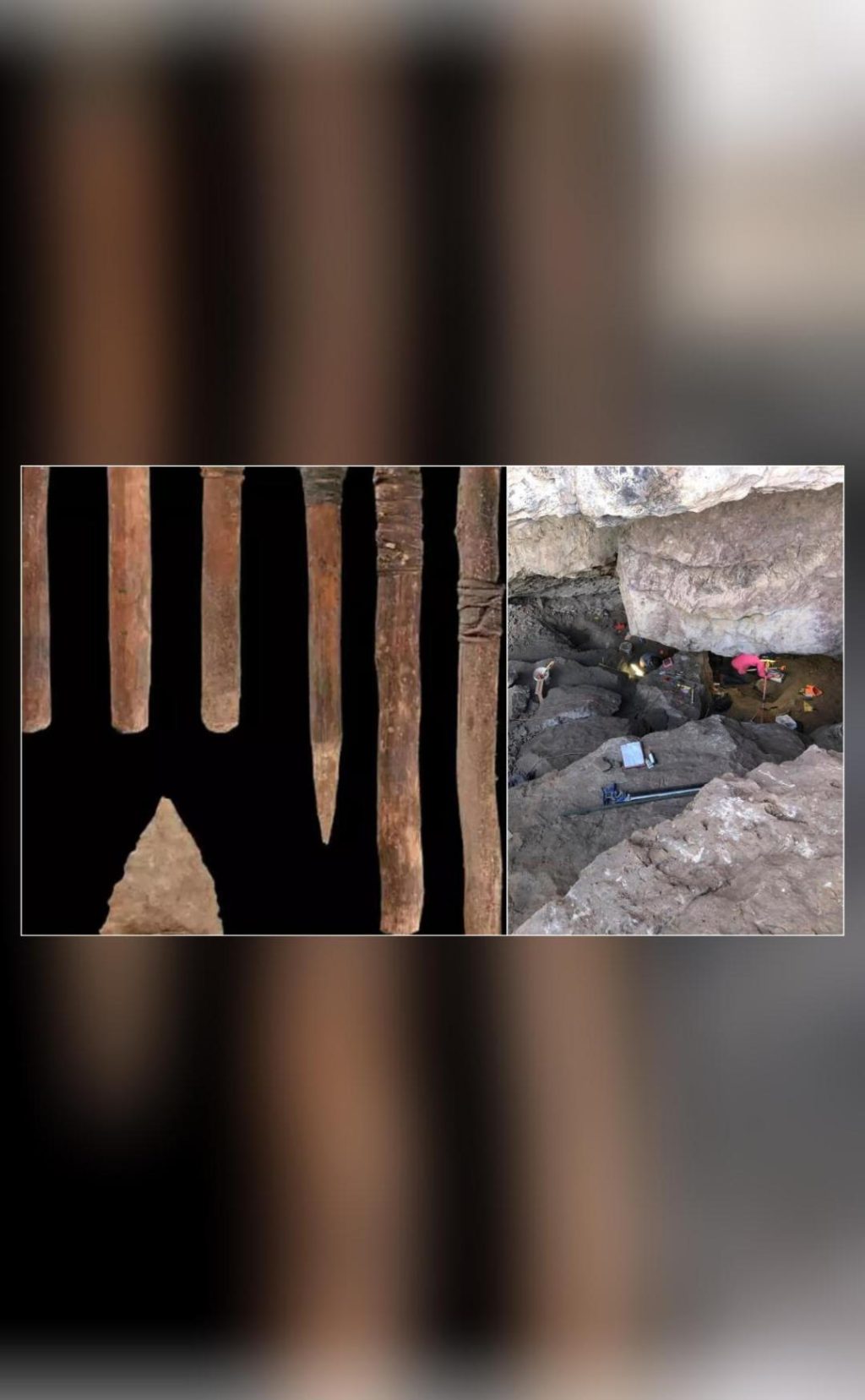
Archaeologists Discover Ancient Weapons in Remote Texas Cave
Deep within the remote caves of Big Bend National Park in Texas, a team of archaeologists has made a groundbreaking discovery that has sent shockwaves throughout the scientific community. A kit of ancient weapons, dating back thousands of years, has been unearthed in the cave, which could potentially become North America’s oldest intact weapon system.
The discovery was made by a team led by Bryon Schroeder, director of the Center for Big Bend Studies. According to Schroeder, the weapons are “pretty monumental” and could greatly enhance our understanding of the early humans who inhabited the region.
The cave, which is located in a remote area of the national park, was previously unknown to archaeologists. The team spent several weeks excavating the site, carefully uncovering the ancient weapons and artifacts.
“We’re thrilled with the discovery,” said Schroeder. “These weapons are incredibly well-preserved, and they provide a unique window into the lives of the people who lived in this region thousands of years ago.”
The weapons themselves are a mix of stone and bone tools, including spear points, arrowheads, and knives. According to the archaeologists, the tools are remarkably well-preserved, with many still retaining their sharp edges and points.
“These weapons are not just interesting artifacts,” said Schroeder. “They’re also a vital part of understanding the daily lives of the people who lived in this region. They provide a glimpse into what their daily struggles and triumphs were, and how they interacted with their environment.”
The discovery of the ancient weapons is significant not just because of their age and condition, but also because of their potential to shed light on the lives of early humans in North America. For centuries, archaeologists have been fascinated by the origins of human habitation in North America, and this discovery could potentially provide some answers.
“This find has the potential to rewrite the history books,” said Schroeder. “It could provide a new perspective on the early human inhabitants of North America, and how they lived and interacted with their environment.”
The discovery of the ancient weapons is also significant because of its potential to provide insight into the cultural and technological developments of early humans in North America. The weapons themselves are a mix of stone and bone tools, which suggests that the early humans who used them were skilled craftsmen who were able to adapt to their environment.
“This find is a testament to the ingenuity and resourcefulness of early humans,” said Schroeder. “They were able to create these complex tools using materials that were available to them, and that’s a testament to their skill and creativity.”
The discovery of the ancient weapons is also significant because of its potential to provide insight into the daily lives of early humans in North America. The weapons are a reminder that early humans were not just hunter-gatherers, but also skilled craftsmen and traders.
“These weapons are a reminder that early humans were complex and multifaceted,” said Schroeder. “They were not just struggling to survive, but also creating and innovating. This find is a testament to the richness and diversity of human history.”
The discovery of the ancient weapons is a significant find not just for archaeologists, but also for the general public. It provides a glimpse into the lives of early humans in North America, and reminds us of the importance of preserving our cultural heritage.
“This find is a reminder of the importance of preserving our cultural heritage,” said Schroeder. “It’s a reminder that our past is precious, and that it’s up to us to protect and preserve it for future generations.”
In conclusion, the discovery of ancient weapons in a remote Texas cave is a significant find that has the potential to rewrite the history books. The weapons are well-preserved, and provide a unique window into the lives of early humans in North America. They are a testament to the ingenuity and resourcefulness of early humans, and provide a glimpse into the daily struggles and triumphs of early humans.






